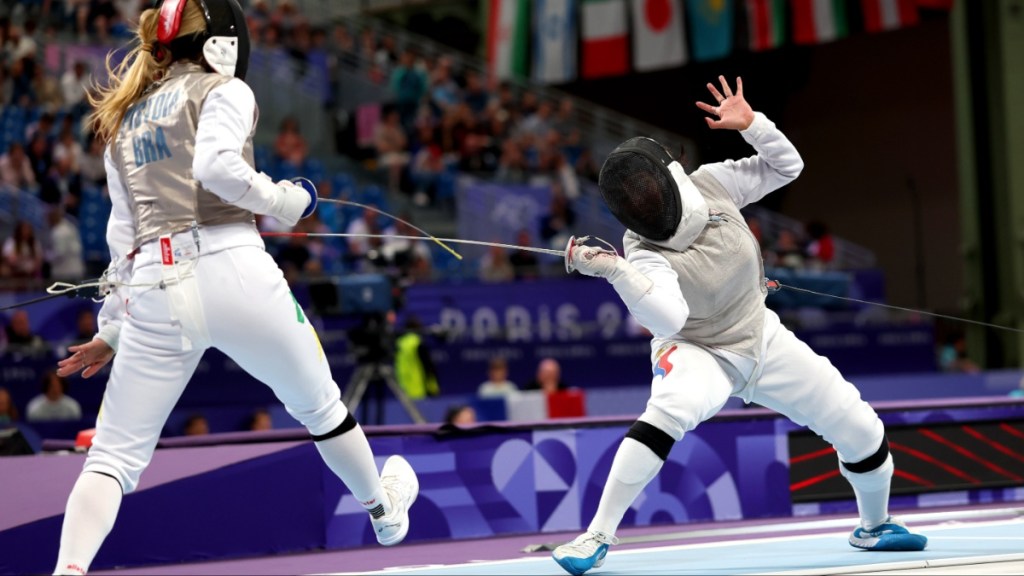Many fans are wondering why the Paris Olympics 2024 has fencers tethered to a cable. This intriguing aspect of the sport has garnered significant attention, sparking questions and interest among viewers.
For those looking to understand the purpose of this tethering and its importance in fencing, here’s everything you need to know.
Why are fencers tethered in Paris Olympics 2024?
At the Paris 2024 Olympic Games, organizers tether fencers to a cable primarily to facilitate accurate scoring during matches.
This cable, known as a body cord, connects the fencer’s uniform and weapon to an electronic scoring system. When the fencer’s weapon makes contact with the opponent’s conductive garment, called the lamé, the body cord completes an electrical circuit, which registers a valid touch.
The use of electrical scoring in fencing dates back to 1933 and is essential for accurate judging. Given the rapid speed and subtle movements in fencing, determining valid touches with the naked eye is nearly impossible. The body cord system reliably records every valid touch, maintaining the competition’s integrity and fairness.
Fencing features three main disciplines: foil, épée, and sabre, each with specific target areas and scoring methods, as per the official Olympic website. Foil and épée are thrusting weapons, with foil targeting the torso and épée targeting the entire body. Sabre is both a thrusting and cutting weapon, scoring with any part of the blade on the upper body, face mask, and neck bib.
Fencing equipment is designed for functionality and safety. It includes stainless steel masks, Kevlar neck bibs, jackets, plastrons, gloves, breeches, and long socks. Women must wear plastic chest protectors under their jackets for added safety, while men have the option to wear one.
In summary, fencers’ tethering to a cable at the Paris 2024 Olympics ensures precise electronic scoring. This system guarantees fair competition by accurately registering valid touches.










